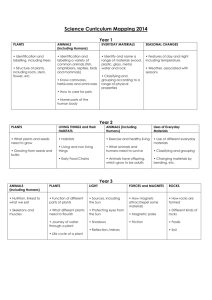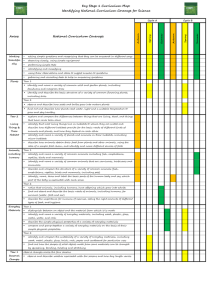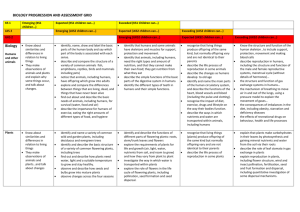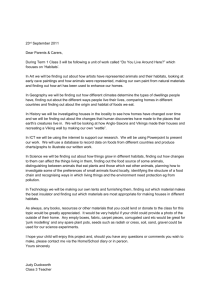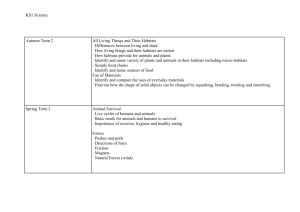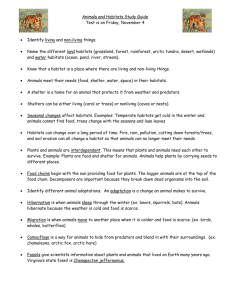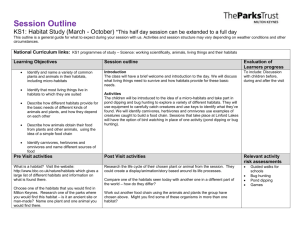Cycle B Biology
advertisement
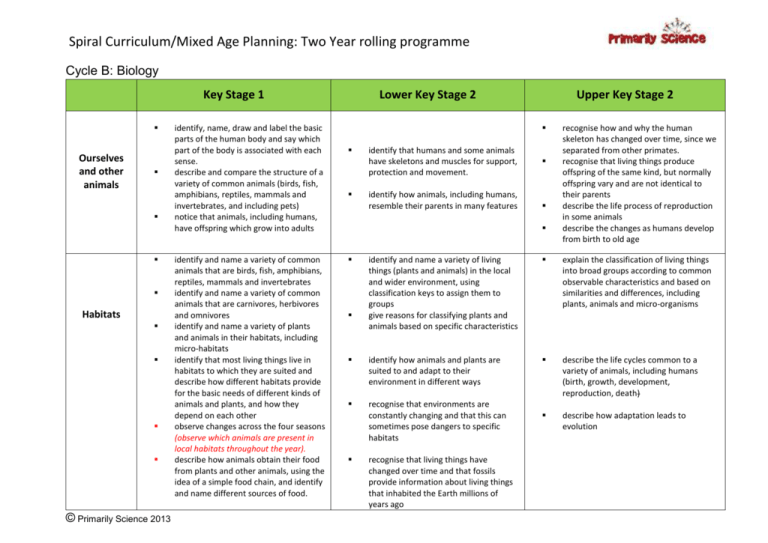
Spiral Curriculum/Mixed Age Planning: Two Year rolling programme Cycle B: Biology Key Stage 1 Ourselves and other animals Habitats © Primarily Science 2013 identify, name, draw and label the basic parts of the human body and say which part of the body is associated with each sense. describe and compare the structure of a variety of common animals (birds, fish, amphibians, reptiles, mammals and invertebrates, and including pets) notice that animals, including humans, have offspring which grow into adults identify and name a variety of common animals that are birds, fish, amphibians, reptiles, mammals and invertebrates identify and name a variety of common animals that are carnivores, herbivores and omnivores identify and name a variety of plants and animals in their habitats, including micro-habitats identify that most living things live in habitats to which they are suited and describe how different habitats provide for the basic needs of different kinds of animals and plants, and how they depend on each other observe changes across the four seasons (observe which animals are present in local habitats throughout the year). describe how animals obtain their food from plants and other animals, using the idea of a simple food chain, and identify and name different sources of food. Lower Key Stage 2 Upper Key Stage 2 identify that humans and some animals have skeletons and muscles for support, protection and movement. identify how animals, including humans, resemble their parents in many features recognise how and why the human skeleton has changed over time, since we separated from other primates. recognise that living things produce offspring of the same kind, but normally offspring vary and are not identical to their parents describe the life process of reproduction in some animals describe the changes as humans develop from birth to old age identify and name a variety of living things (plants and animals) in the local and wider environment, using classification keys to assign them to groups give reasons for classifying plants and animals based on specific characteristics explain the classification of living things into broad groups according to common observable characteristics and based on similarities and differences, including plants, animals and micro-organisms identify how animals and plants are suited to and adapt to their environment in different ways describe the life cycles common to a variety of animals, including humans (birth, growth, development, reproduction, death) recognise that environments are constantly changing and that this can sometimes pose dangers to specific habitats describe how adaptation leads to evolution recognise that living things have changed over time and that fossils provide information about living things that inhabited the Earth millions of years ago Spiral Curriculum/Mixed Age Planning: Two Year rolling programme

